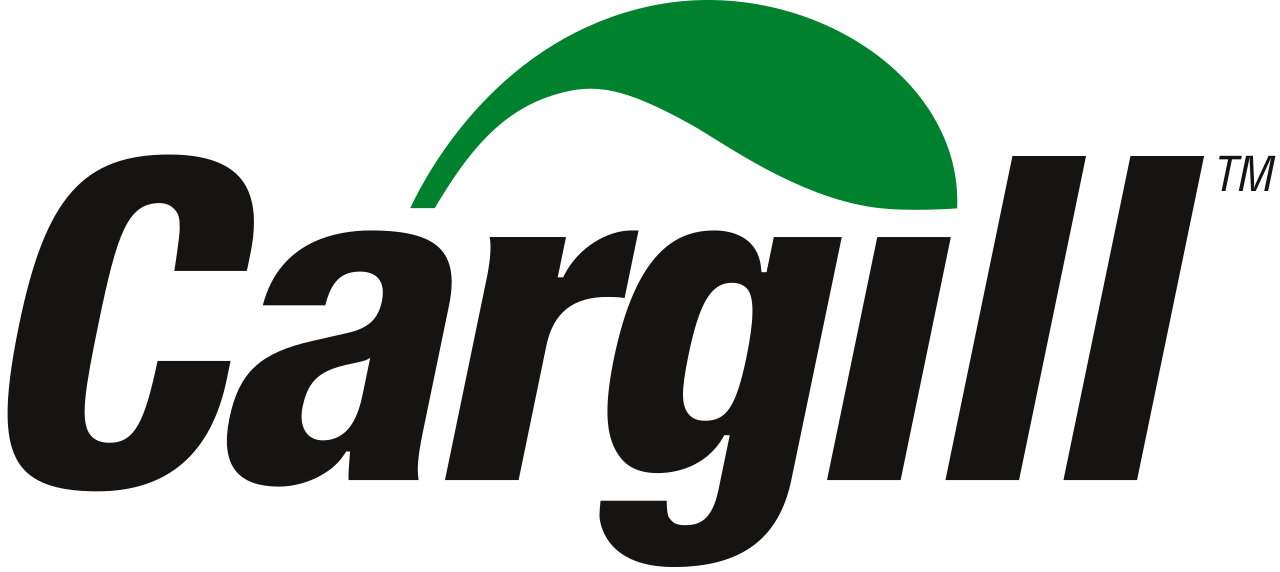Global Regenerative Agriculture Market, By Practice, By Product Type, By Application, By Region & Segmental Insights Trends and Forecast, 2024 – 2034
- Industry: Agriculture
- Report ID: TNR-110-1147
- Number of Pages: 420
- Table/Charts : Yes
- June, 2024
- Base Year : 2024
- No. of Companies : 10+
- No. of Countries : 29
- Views : 10165
- Covid Impact Covered: Yes
- War Impact Covered: Yes
- Formats : PDF, Excel, PPT
Regenerative agriculture is an ecological approach to farming that focuses on the restoration and enhancement of soil health, biodiversity, and ecosystem function. This method contrasts with conventional agriculture by emphasizing practices that regenerate, rather than deplete, natural resources. Key techniques include no-till farming, cover cropping, crop rotation, and holistic grazing management. These practices aim to increase soil organic matter, enhance water retention, reduce erosion, and promote biodiversity. Regenerative agriculture also seeks to mitigate climate change by sequestering carbon in the soil and reducing greenhouse gas emissions. By fostering healthier ecosystems, regenerative agriculture improves farm resilience, productivity, and sustainability.
The regenerative agriculture market is experiencing significant growth, driven by increasing awareness of environmental sustainability and the need for climate change mitigation. Consumers are demanding food products that are produced sustainably, prompting farmers and agribusinesses to adopt regenerative practices. Government incentives and policies supporting sustainable farming further bolster this market. Additionally, technological advancements in farming equipment and soil health monitoring are facilitating the adoption of regenerative techniques. The market presents opportunities for innovation in bio-based fertilizers, organic seeds, and sustainable supply chain solutions. As global food systems face pressure to become more resilient and eco-friendlier, the regenerative agriculture market is poised for substantial expansion, offering both environmental and economic benefits.
In Terms of Revenue, the Global Regenerative Agriculture Market was Worth US$ 1.23 Bn in 2023, Anticipated to Witness CAGR of 16.4% During 2024 – 2034.

Trends in the Global Regenerative Agriculture Market
- Integration of Technology in Regenerative Agriculture: Farmers are increasingly using precision agriculture tools, such as drones, sensors, and satellite imagery, to monitor soil health, crop conditions, and biodiversity. These technologies enable more accurate data collection and analysis, helping farmers make informed decisions about crop rotation, cover cropping, and no-till farming. Additionally, advancements in soil health monitoring, such as soil organic carbon testing and microbial activity assessment, provide valuable insights into the effectiveness of regenerative practices. This tech-driven approach not only enhances productivity and efficiency but also ensures that regenerative methods are implemented more effectively and sustainably. The growing adoption of these technologies reflects a broader trend toward digital transformation in agriculture, making regenerative farming more accessible and scalable for farmers worldwide.
- Corporate and Institutional Support for Regenerative Practices: Major food and beverage companies are committing to sourcing ingredients from farms that employ regenerative practices, driven by consumer demand for sustainably produced goods and corporate sustainability goals. For instance, companies like General Mills and Danone have launched initiatives to support regenerative farming within their supply chains. Additionally, financial institutions and investors are recognizing the long-term economic benefits of regenerative agriculture and are providing funding and resources to farmers transitioning to these methods. Government programs and policies are also playing a crucial role, offering incentives and subsidies to encourage the adoption of regenerative practices. This growing support from the private and public sectors is accelerating the transition to regenerative agriculture, creating a more sustainable and resilient food system while opening new market opportunities for farmers and agribusinesses.
Agroforestry has emerged as a dominant category in the global regenerative agriculture market due to its multifaceted benefits and adaptability. By integrating trees and shrubs into agricultural landscapes, agroforestry enhances biodiversity, improves soil health, and increases carbon sequestration, directly contributing to climate change mitigation. Trees provide shade, windbreaks, and habitat for beneficial wildlife, promoting a balanced ecosystem. Furthermore, agroforestry systems offer diversified income streams for farmers through the production of timber, fruit, nuts, and other tree-based products. This diversification reduces financial risk and enhances food security. The practice’s adaptability to various climates and farming systems makes it a versatile solution, driving its widespread adoption and dominance in the regenerative agriculture market.
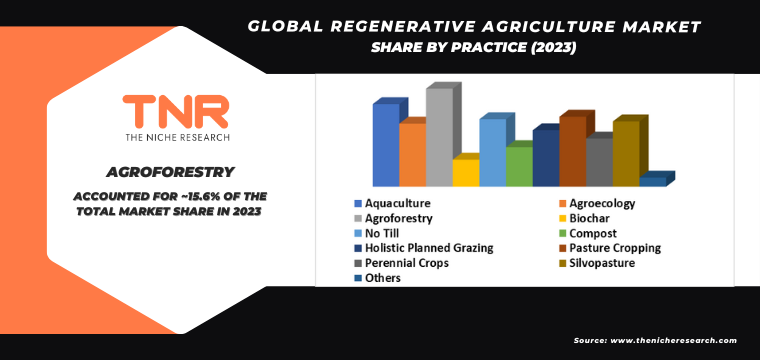
In 2023, the compost and organic fertilizers segment solidified its position as the second-largest category in the global regenerative agriculture market due to growing recognition of their benefits for soil health and crop productivity. Compost and organic fertilizers enrich soil with essential nutrients, improve soil structure, and enhance microbial activity, leading to more resilient and productive farming systems. As awareness of the environmental impacts of synthetic fertilizers increases, farmers are turning to organic alternatives to reduce chemical runoff and pollution. The rising demand for organically produced food has driven farmers to adopt organic fertilizers to meet market standards. These factors, combined with supportive government policies and incentives, have significantly boosted the adoption and growth of this segment.
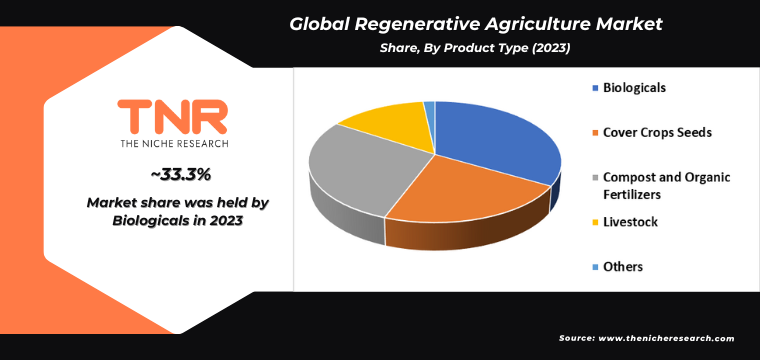
The water management segment has exerted significant dominance over the global regenerative agriculture market due to its crucial role in enhancing farm resilience and productivity. Effective water management practices, such as rainwater harvesting, drip irrigation, and the creation of retention ponds, optimize water usage, reduce wastage, and ensure consistent crop hydration. These techniques are essential in mitigating the impacts of climate change, such as droughts and unpredictable rainfall patterns, thereby safeguarding crop yields. Moreover, efficient water management contributes to improved soil health by preventing erosion and maintaining soil moisture levels. As water scarcity becomes a pressing global issue, the adoption of sustainable water management practices in regenerative agriculture has become increasingly critical, driving its prominence in the market.
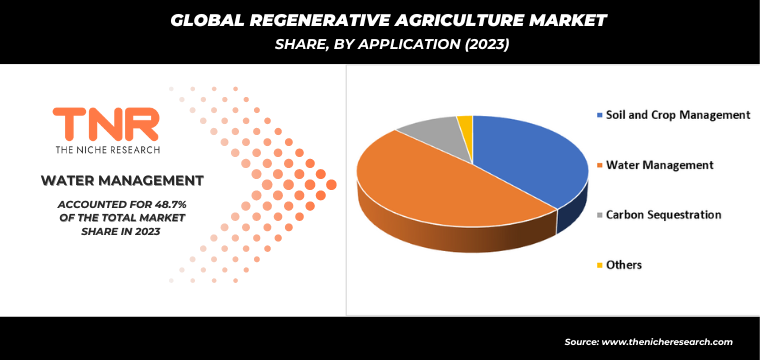
In 2023, North America solidified its dominance in the global regenerative agriculture market. The region’s robust agricultural infrastructure and technological advancements have facilitated the widespread adoption of regenerative practices. Heightened consumer demand for sustainably produced food has driven farmers and agribusinesses to embrace regenerative methods. Significant support from government programs, such as subsidies and incentives for sustainable farming practices, has further accelerated this transition. Moreover, large corporations in the food and beverage industry, based in North America, are increasingly committing to sourcing from regenerative farms to meet sustainability goals. This combination of consumer demand, technological innovation, and institutional support has positioned North America as a leader in the regenerative agriculture market.
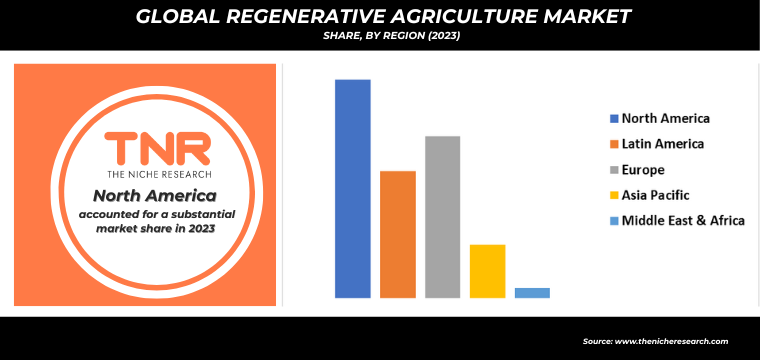
Competitive Landscape
Some of the players operating in the regenerative agriculture market are
- Alter Eco Americas, Inc.
- Bayer AG
- Bluebird Grain Farms
- Cargill, Inc.
- CIBO Technologies
- Continuum Ag
- Danone SA
- General Mills Inc.
- Grounded
- Nestlé S.A.
- RegenAG
- Soil Capital Ltd.
- White Oak Pastures
- Other Industry Participants
Global Regenerative Agriculture Market Scope
| Report Specifications | Details |
| Market Revenue in 2023 | US$ 1.23 Bn |
| Market Size Forecast by 2034 | US$ 6.57 Bn |
| Growth Rate (CAGR) | 16.4% |
| Historic Data | 2016 – 2022 |
| Base Year for Estimation | 2023 |
| Forecast Period | 2024 – 2034 |
| Report Inclusions | Market Size & Estimates, Market Dynamics, Competitive Scenario, Trends, Growth Factors, Market Determinants, Key Investment Segmentation, Product/Service/Solutions Benchmarking |
| Segments Covered | By Practice, By Product Type, By Application, By Region |
| Regions Covered | North America, Europe, Asia Pacific, Middle East & Africa, Latin America |
| Countries Covered | U.S., Canada, Mexico, Rest of North America, France, The UK, Spain, Germany, Italy, Nordic Countries (Denmark, Finland, Iceland, Sweden, Norway), Benelux Union (Belgium, The Netherlands, Luxembourg), Rest of Europe, China, Japan, India, New Zealand, Australia, South Korea, Southeast Asia (Indonesia, Thailand, Malaysia, Singapore, Rest of Southeast Asia), Rest of Asia Pacific, Saudi Arabia, UAE, Egypt, Kuwait, South Africa, Rest of Middle East & Africa, Brazil, Argentina, Rest of Latin America |
| Key Players | Alter Eco Americas, Inc., Bayer AG, Bluebird Grain Farms, Cargill, Inc., CIBO Technologies, Continuum Ag, Danone SA, General Mills Inc., Grounded, Nestlé S.A., RegenAG, Soil Capital Ltd., White Oak Pastures |
| Customization Scope | Customization allows for the inclusion/modification of content pertaining to geographical regions, countries, and specific market segments. |
| Pricing & Procurement Options | Explore purchase options tailored to your specific research requirements |
| Contact Details | Consult With Our Expert
Japan (Toll-Free): +81 663-386-8111 South Korea (Toll-Free): +82-808- 703-126 Saudi Arabia (Toll-Free): +966 800-850-1643 United Kingdom: +44 753-710-5080 United States: +1 302-232-5106 E-mail: askanexpert@thenicheresearch.com
|
Global Regenerative Agriculture Market
By Practice
- Aquaculture
- Agroecology
- Agroforestry
- Biochar
- No Till
- Compost
- Holistic Planned Grazing
- Pasture Cropping
- Perennial Crops
- Silvopasture
- Others
By Product Type
- Biologicals
- Cover Crops Seeds
- Compost and Organic Fertilizers
- Livestock
- Others
By Application
- Soil and Crop Management
- Water Management
- Carbon Sequestration
- Others
By Region
- North America (U.S., Canada, Mexico, Rest of North America)
- Europe (France, The UK, Spain, Germany, Italy, Nordic Countries (Denmark, Finland, Iceland, Sweden, Norway), Benelux Union (Belgium, The Netherlands, Luxembourg), Rest of Europe)
- Asia Pacific (China, Japan, India, New Zealand, Australia, South Korea, Southeast Asia (Indonesia, Thailand, Malaysia, Singapore, Rest of Southeast Asia), Rest of Asia Pacific)
- Middle East & Africa (Saudi Arabia, UAE, Egypt, Kuwait, South Africa, Rest of Middle East & Africa)
- Latin America (Brazil, Argentina, Rest of Latin America)
Report Layout:
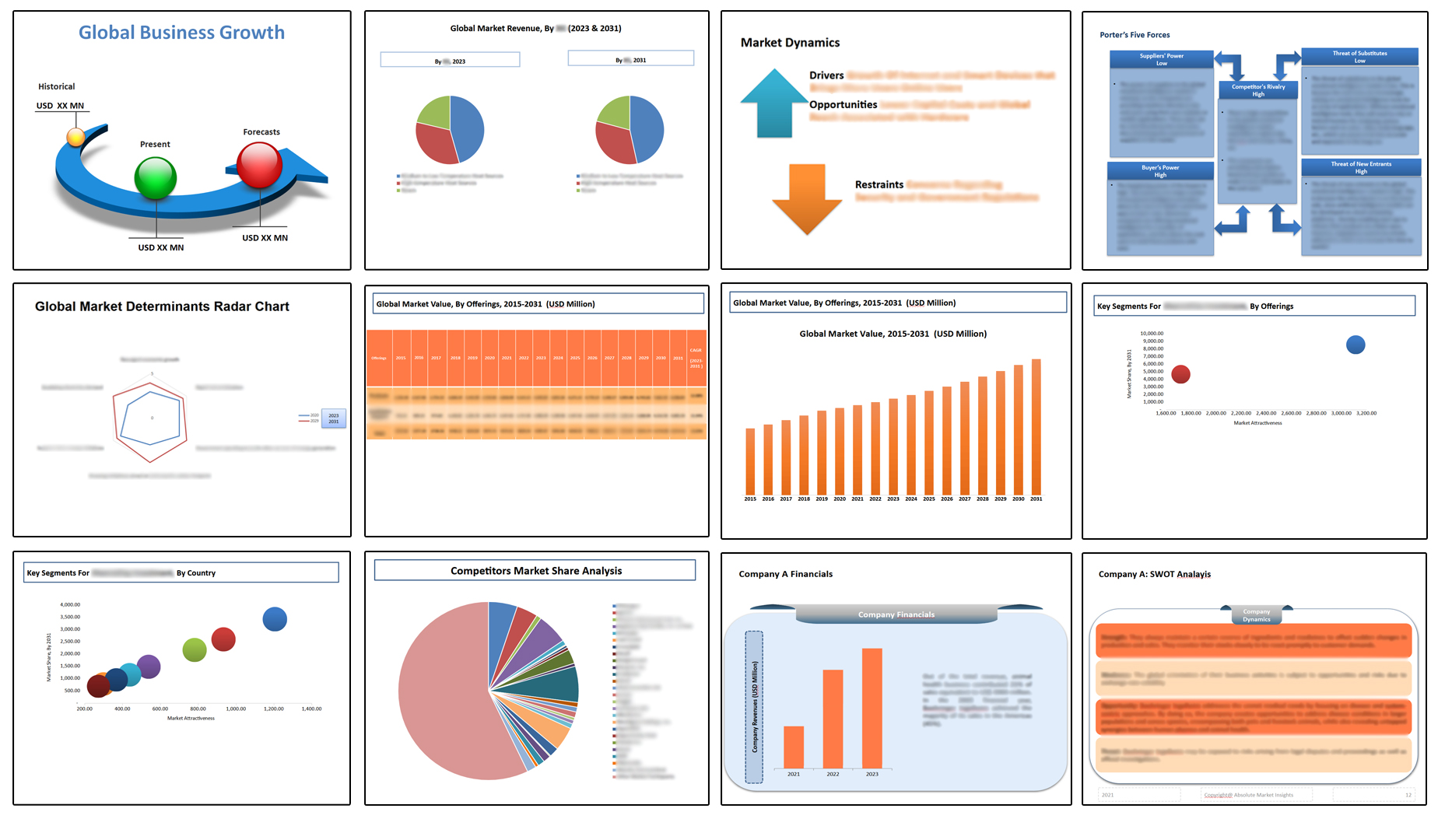
Table of Contents
Note: This ToC is tentative and can be changed according to the research study conducted during the course of report completion.
**Exclusive for Multi-User and Enterprise User.
Global Regenerative Agriculture Market
By Practice
- Aquaculture
- Agroecology
- Agroforestry
- Biochar
- No Till
- Compost
- Holistic Planned Grazing
- Pasture Cropping
- Perennial Crops
- Silvopasture
- Others
By Product Type
- Biologicals
- Cover Crops Seeds
- Compost and Organic Fertilizers
- Livestock
- Others
By Application
- Soil and Crop Management
- Water Management
- Carbon Sequestration
- Others
By Region
- North America (U.S., Canada, Mexico, Rest of North America)
- Europe (France, The UK, Spain, Germany, Italy, Nordic Countries (Denmark, Finland, Iceland, Sweden, Norway), Benelux Union (Belgium, The Netherlands, Luxembourg), Rest of Europe)
- Asia Pacific (China, Japan, India, New Zealand, Australia, South Korea, Southeast Asia (Indonesia, Thailand, Malaysia, Singapore, Rest of Southeast Asia), Rest of Asia Pacific)
- Middle East & Africa (Saudi Arabia, UAE, Egypt, Kuwait, South Africa, Rest of Middle East & Africa)
- Latin America (Brazil, Argentina, Rest of Latin America)
The Niche Research approach encompasses both primary and secondary research methods to provide comprehensive insights. While primary research is the cornerstone of our studies, we also incorporate secondary research sources such as company annual reports, premium industry databases, press releases, industry journals, and white papers.
Within our primary research, we actively engage with various industry stakeholders, conducting paid interviews and surveys. Our meticulous analysis extends to every market participant in major countries, allowing us to thoroughly examine their portfolios, calculate market shares, and segment revenues.
Our data collection primarily focuses on individual countries within our research scope, enabling us to estimate regional market sizes. Typically, we employ a bottom-up approach, meticulously tracking trends in different countries. We analyze growth drivers, constraints, technological innovations, and opportunities for each country, ultimately arriving at regional figures.Our process begins by examining the growth prospects of each country. Building upon these insights, we project growth and trends for the entire region. Finally, we utilize our proprietary model to refine estimations and forecasts.
Our data validation standards are integral to ensuring the reliability and accuracy of our research findings. Here’s a breakdown of our data validation processes and the stakeholders we engage with during our primary research:
- Supply Side Analysis: We initiate a supply side analysis by directly contacting market participants, through telephonic interviews and questionnaires containing both open-ended and close-ended questions. We gather information on their portfolios, segment revenues, developments, and growth strategies.
- Demand Side Analysis: To gain insights into adoption trends and consumer preferences, we reach out to target customers and users (non-vendors). This information forms a vital part of the qualitative analysis section of our reports, covering market dynamics, adoption trends, consumer behavior, spending patterns, and other related aspects.
- Consultant Insights: We tap into the expertise of our partner consultants from around the world to obtain their unique viewpoints and perspectives. Their insights contribute to a well-rounded understanding of the markets under investigation.
- In-House Validation: To ensure data accuracy and reliability, we conduct cross-validation of data points and information through our in-house team of consultants and utilize advanced data modeling tools for thorough verification.
The forecasts we provide are based on a comprehensive assessment of various factors, including:
- Market Trends and Past Performance (Last Five Years): We accurately analyze market trends and performance data from preceding five years to identify historical patterns and understand the market’s evolution.
- Historical Performance and Growth of Market Participants: We assess the historical performance and growth trajectories of key market participants. This analysis provides insights into the competitive landscape and individual company strategies.
- Market Determinants Impact Analysis (Next Eight Years): We conduct a rigorous analysis of the factors that are projected to influence the market over the next eight years. This includes assessing both internal and external determinants that can shape market dynamics.
- Drivers and Challenges for the Forecast Period:Identify the factors expected to drive market growth during the forecast period, as well as the challenges that the industry may face. This analysis aids in deriving an accurate growth rate projection.
- New Acquisitions, Collaborations, or Partnerships: We keep a close watch on any new acquisitions, collaborations, or partnerships within the industry. These developments can have a significant impact on market dynamics and competitiveness.
- Macro and Micro Factors Analysis:A thorough examination of both macro-level factors (e.g., economic trends, regulatory changes) and micro-level factors (e.g., technological advancements, consumer preferences) that may influence the market during the forecast period.
- End-User Sentiment Analysis: To understand the market from the end-user perspective, we conduct sentiment analysis. This involves assessing the sentiment, preferences, and feedback of the end-users, which can provide valuable insights into market trends.
- Perspective of Primary Participants: Insights gathered directly from primary research participants play a crucial role in shaping our forecasts. Their perspectives and experiences provide valuable qualitative data.
- Year-on-Year Growth Trend: We utilize a year-on-year growth trend based on historical market growth and expected future trends. This helps in formulating our growth projections, aligning them with the market’s historical performance.
Research process adopted by TNR involves multiple stages, including data collection, validation, quality checks, and presentation. It’s crucial that the data and information we provide add value to your existing market understanding and expertise. We have also established partnerships with business consulting, research, and survey organizations across regions and globally to collaborate on regional analysis and data validation, ensuring the highest level of accuracy and reliability in our reports.
